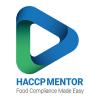I've been struggling with the above responses all day, wavering on if I should reply or not... I'll throw this out there for review, maybe it helps the OP and maybe it doesn't. I fully admit I'm the inexperienced one amongst this wealth of veterans and knowledge.
If you get very, very specific and detail oriented in your HACCP on pathogens, don't you open the door for an auditor to say "what about this one, or that one?" You create the opportunity to miss out on listing one specifically by name. We struggled with that exact same question when we rewrote our HACCP last quarter, and settled for calling them "food borne microorganisms" in our potential hazards (sorry above, I misspoke when I say pathogens). Now, under the justification for inclusion of hazard we cite various ways a food borne microorganism can be introduced to the product, everything we could think of affecting the product we receive. Then, to our preventative measure, we cite our sanitation program where we have verified our cleaning procedures are effective for killing Enterobacteriaceae, the Order in which most of the more familiar pathogens are classified (NOTE: we are a third party milling/packaging/warehousing operation for dehydrated vegetables, and we have no ownership of the product in order to perform micro tests upon receiving, so our HACCP forces us to control risk beyond the product itself).
Basically what I've learned thus far is "you have to be able to defend your procedures/policies." Given the defense above when asked why we don't list E.coli, salmonella and the many other food borne pathogens specifically on our HACCP, where might that be insufficient? If you get too detail oriented, you open the door for items to get missed and trying to manage a 100 page HACCP plan...
John123,
I totally agree with your view on the "risk" of listing foodborne pathogens in detail or being vague / non specific linked to the risk that an auditor will say "why didn't you think of
"that one".
Sensational headlines appear in the news from time to time linking the risk of for example an environmental contaminant with a particular health risk. An example might be some types of modern flame retardants used in furniture that are carcinogenic getting into the food chain and "allegedly" causing illness in people consuming the food that contains the chemical hazard (often at infinitesimal levels). However, there might be a long term effect.
However we need to be pragmatic about this and consider the Likelihood of Occurrence ie the chance / probability that the hazard will be present in the food or finished product, at levels that can cause illness.
To make a judgement on this we need objective, peer reviewed data ie data from reputable scientific organizations and not sensationalist headlines in the press.
Organizations like EFSA (European Food Safety Authority), exist around the world and are useful sources of information on foodborne hazards and associated risk. Alternatively there might be an "trade association" that represents your industry, for example "Chilled Food Association" in the UK and they often publish position statements on the risks associated with food safety in products manufactured by their industry. Utilisation of data from sources like these can then form part of your defence / logic in identifying certain foodborne hazards and not others.
From my experience in working with food manufacturers and ingredient suppliers with their hazard analysis, there is a lot of data available freely in the public domain through the internet.
Unfortunately, to find this and utilize this takes time, expertise and money. Based on my experience with clients I work with through my own technical consultancy, these three resources are often in short supply in some food businesses. In some cases they then have to bring in external technical support to help them achieve their goals on food safety, whether this is
HACCP, BRC accreditation or ISO22000.




















